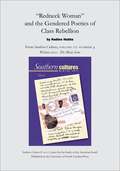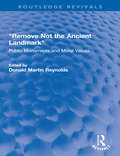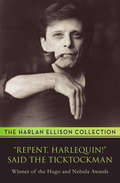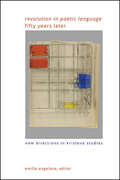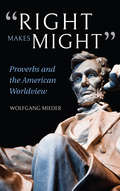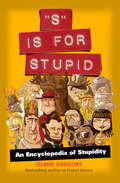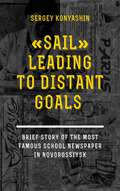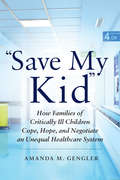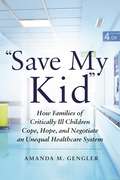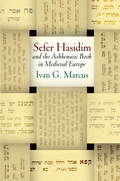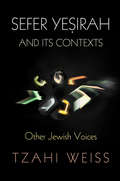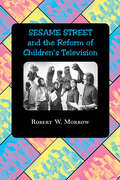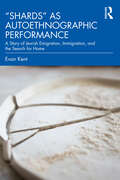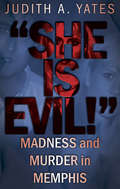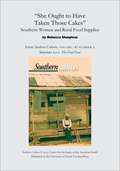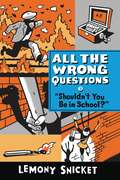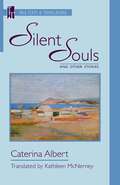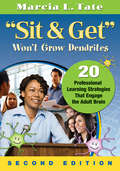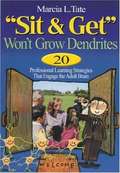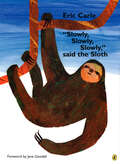- Table View
- List View
"Redneck Woman" and the Gendered Poetics of Class Rebellion
by Nadine HubbsIn 2004 Gretchen Wilson exploded onto the country music scene with 'Redneck Woman.' The blockbuster single led to the early release of her first CD and propelled it to triple platinum sales."Gretchen Wilson celebrates a new kind Virile Woman on the country music scene--but this subtle gender analysis reveals much more than immediately meets the eye.This article appears in the 2011 Music issue of Southern Cultures.Southern Cultures is published quarterly (spring, summer, fall, winter) by the University of North Carolina Press. The journal is sponsored by the University of North Carolina at Chapel Hill's Center for the Study of the American South.
"Remove Not the Ancient Landmark": Public Monuments and Moral Values (Routledge Revivals)
by Donald Martin ReynoldsFirst published in 1996, "Remove Not the Ancient Landmark" explores the ways that public monuments symbolize and convey moral values. It analyzes the roles that monuments have always played and the influence they continue to exert on societies around the world. The book also explores the origins and nature of humanity in light of the monuments.
"Repent, Harlequin!" Said the Ticktockman
by Harlan EllisonWinner of the Hugo and Nebula Awards: A science fiction classic about an antiestablishment rebel set on overthrowing the totalitarian society of the future. One of science fiction's most antiestablishment authors rails against the accepted order while questioning blind obedience to the state in this unique pairing of short story and essay. "'Repent, Harlequin!' Said the Ticktockman" is set in a dystopian future society in which time is regulated by a heavy bureaucratic hand known as the Ticktockman. The rebellious Everett C. Marm flouts convention, masquerading as the anarchic Harlequin, disrupting the precise schedule with bullhorns and jellybeans in a world where being late is nothing short of a crime. But when his love, Pretty Alice, betrays Everett out of a desire to return to the punctuality to which she is programmed, he is forced to face the Ticktockman and his gauntlet of consequences. The bonus essay included in this volume, "Stealing Tomorrow," is a hard-to-find Harlan Ellison masterwork, an exploration of the rebellious nature of the writer's soul. Waxing poetic on humankind's intellectual capabilities versus its emotional shortcomings, the author depicts an inner self that guides his words against the established bureaucracies, assuring us that the intent of his soul is to "come lumbering into town on a pink-and-yellow elephant, fast as Pegasus, and throw down on the established order." Winner of the Prometheus Hall of Fame Award, "'Repent, Harlequin!' Said the Ticktockman" has become one of the most reprinted short stories in the English language. Fans of George Orwell's Nineteen Eighty-Four and Aldous Huxley's Brave New World will delight in this antiestablishment vision of a Big Brother society and the rebel determined to take it down. The perfect complement, "Stealing Tomorrow" is a hidden gem that reinforces Ellison's belief in humankind's inner nobility and the necessity to buck totalitarian forces that hamper our steady evolution.
"Revolution in Poetic Language" Fifty Years Later: New Directions in Kristeva Studies (SUNY series in Gender Theory)
by Emilia AngelovaIn her 1974 Revolution in Poetic Language, Julia Kristeva resisted the abstract use of language, with its aim of totalization and finality, in all its colonizing and alienating forms. A major thinker and critic, Kristeva reappropriated Hegel's concepts of desire and negativity, in conjunction with the thought of Heidegger, Arendt, Freud, and Lacan, to revolt against modernity's culture of nihilism and the West's inability to deal with loss. This collection celebrates the fiftieth anniversary of Revolution in Poetic Language by revisiting Kristeva's oeuvre and establishing exciting new directions in Kristeva studies. Engaging with queer and transgender studies, disability studies, decolonial studies, and more, renowned and rising scholars plot continuities in—and push the boundaries of—Kristeva's thinking about loss, revolution, and revolt. The volume also includes two essays by Kristeva, translated into English for the first time here—"The Impossibility of Loss" (1988) and "Of What Use Are Poets in Times of Distress?" (2016).
"Right Makes Might": Proverbs and the American Worldview
by Wolfgang Mieder“A powerful and timely addition to the literature of rhetoric and folklore.” —ChoiceIn 1860, Abraham Lincoln employed the proverb Right makes might—opposite of the more aggressive Might makes right—in his famed Cooper Union address. While Lincoln did not originate the proverb, his use of it in this critical speech indicates that the fourteenth century phrase had taken on new ethical and democratic connotations in the nineteenth century. In this collection, famed scholar of proverbs Wolfgang Mieder explores the multifaceted use and function of proverbs through the history of the United States, from their early beginnings up through their use by such modern-day politicians as Barack Obama, Hillary Rodham Clinton, and Bernie Sanders. Building on previous publications and unpublished research, Mieder explores sociopolitical aspects of the American worldview as expressed through the use of proverbs in politics, women’s rights, and the civil rights movement—and by looking at the use of proverbial phrases, Mieder demonstrates how one traditional phrase can take on numerous expressive roles over time, and how they continue to play a key role in our contemporary moment.
"Right Makes Might": Proverbs and the American Worldview
by Wolfgang Mieder“A powerful and timely addition to the literature of rhetoric and folklore.” —ChoiceIn 1860, Abraham Lincoln employed the proverb Right makes might—opposite of the more aggressive Might makes right—in his famed Cooper Union address. While Lincoln did not originate the proverb, his use of it in this critical speech indicates that the fourteenth century phrase had taken on new ethical and democratic connotations in the nineteenth century. In this collection, famed scholar of proverbs Wolfgang Mieder explores the multifaceted use and function of proverbs through the history of the United States, from their early beginnings up through their use by such modern-day politicians as Barack Obama, Hillary Rodham Clinton, and Bernie Sanders. Building on previous publications and unpublished research, Mieder explores sociopolitical aspects of the American worldview as expressed through the use of proverbs in politics, women’s rights, and the civil rights movement—and by looking at the use of proverbial phrases, Mieder demonstrates how one traditional phrase can take on numerous expressive roles over time, and how they continue to play a key role in our contemporary moment.
"Rules of Thumb" for Sovereign Debt Crises
by Nouriel Roubini Paolo ManasseA report from the International Monetary Fund.
"S" Is for Stupid: An Encyclopedia of Stupidity (Stupid History #11)
by Leland GregoryFrom absurd 911 calls to presidential philosophizing and foolish felons, Leland Gregory generates the best laughs by exposing the worst of human nature. Collectively, his humor collections have sold more than 500,000 copies and generated two New York Times best-sellers. Inside S Is for Stupid, Gregory sets his sights on the stupidest of stupid with a "best-of" collection featuring 50 percent new material and 50 percent fan favorites. As Gregory's largest collection yet, S Is for Stupid features more than 350 pages of outrageous stories, trivia, and factoids organized alphabetically by topic. Such entries include:* The following is a doctor's actual diagnostic notation: The patient is married but sexually active.* "Shooting Reported at Firing Range" --the State, Columbia, South Carolina, August 4, 2006* Arrested for public urination in Bowling Green, Ohio: Mr. Joshua Pees. --the Sentinel-Tribune, Bowling Green, Ohio, September 5, 2001Because the stories Gregory chronicles are just that unbelievable, each anecdote, quote, or factoid is presented with relevant background information, including its verified news source.
"Sail" leading to distant goals: A brief history of the most famous school newspaper of Novorossiysk
by Sergey KonyashinThe documentary-memoir story "Sail leading to distant goals" is devoted to the history of the appearance, formation and development of the Novorossiysk school newspaper "Parus (Sail)", published from 1992 to 2015, as well as the enormous influence that this print edition had on the children's press in the city of Novorossiysk and far beyond. The book was written by Sergey Konyashin, a former cadet of "Parus", twice the "Young Journalist of the Year" in Novorossiysk (1999 and 2000), whose creative path into the great Russian journalism and diplomacy began from the pages of this — now largely legendary — children's print edition. Sergey Konyashin's memoirs will be of interest primarily to those who seek to learn more about the history of the Novorossiysk school press, its place in the development of the city's additional education system, as well as in the fate of some gifted Novorossiysk children.
"Save My Kid": How Families of Critically Ill Children Cope, Hope, and Negotiate an Unequal Healthcare System
by Amanda M. GenglerA frank analysis of the medical and emotional inequalities that pervade the healthcare process for critically ill children Families who have a child with a life-threatening illness face a daunting road ahead of them, one that not only upends their everyday lives, but also strikes at the very heart of parenthood. In “Save My Kid,” Amanda M. Gengler traces the emotional difficulties these families navigate as they confront a fundamentally unequal healthcare system in the United States. Gengler reveals the unrecognized, everyday inequalities tangled up in the process of seeking medical care, showing how different families manage their children’s critical illnesses. She also uncovers the role that emotional goals—deeply rooted in the culture of illness and medicine—play in medical decision-making, healthcare interactions, and the end of children’s lives. A deeply compassionate read, “Save My Kid” is an inside look at inequality in healthcare among those with the most at stake.
"Save My Kid": How Families of Critically Ill Children Cope, Hope, and Negotiate an Unequal Healthcare System
by Amanda M. GenglerA frank analysis of the medical and emotional inequalities that pervade the healthcare process for critically ill children Families who have a child with a life-threatening illness face a daunting road ahead of them, one that not only upends their everyday lives, but also strikes at the very heart of parenthood. In “Save My Kid,” Amanda M. Gengler traces the emotional difficulties these families navigate as they confront a fundamentally unequal healthcare system in the United States. Gengler reveals the unrecognized, everyday inequalities tangled up in the process of seeking medical care, showing how different families manage their children’s critical illnesses. She also uncovers the role that emotional goals—deeply rooted in the culture of illness and medicine—play in medical decision-making, healthcare interactions, and the end of children’s lives. A deeply compassionate read, “Save My Kid” is an inside look at inequality in healthcare among those with the most at stake.
"Scribbling Women": True Tales from Astonishing Lives
by Marthe JocelynIn 1855, Nathaniel Hawthorne wrote to his publisher, complaining about the irritating fad of "scribbling women." Whether they were written by professionals, by women who simply wanted to connect with others, or by those who wanted to leave a record of their lives, those "scribbles" are fascinating, informative, and instructive.Margaret Catchpole was a transported prisoner whose eleven letters provide the earliest record of white settlement in Australia. Writing hundreds of years later, Aboriginal writer Doris Pilkington-Garimara wrote a novel about another kind of exile in Australia. Young Isabella Beeton, one of twenty-one children and herself the mother of four, managed to write a groundbreaking cookbook before she died at the age of twenty-eight. World traveler and journalist Nelly Bly used her writing to expose terrible injustices. Sei Shonagan has left us poetry and journal entries that provide a vivid look at the pampered life and intrigues in Japan's imperial court. Ada Blackjack, sole survivor of a disastrous scientific expedition in the Arctic, fought isolation and fear with her precious Eversharp pencil. Dr. Dang Thuy Tram's diary, written in a field hospital in the steaming North Vietnamese jungle while American bombs fell, is a heartbreaking record of fear and hope.Many of the women in "Scribbling Women" had eventful lives. They became friends with cannibals, delivered babies, stole horses, and sailed on whaling ships. Others lived quietly, close to home. But each of them has illuminated the world through her words.A note from the author: OOPS! On page 197, the credit for the Portrait of Harriet Jacobs on page 43 should read: courtesy of Library of Congress, not Jean Fagan Yellin. On page 197, the credit for the portrait of Isabella Beeton on page 61 should read: National Portrait Gallery, London. On page 198, the credit for page 147 should be Dang Kim Tram, not Kim Tram Dang. We are very sorry about the mix-up in the Photo Credits, they will be updated on any new editions or reprints.From the Hardcover edition.
"Sefer Hasidim" and the Ashkenazic Book in Medieval Europe (Jewish Culture and Contexts)
by Ivan G. MarcusComposed in Germany in the early thirteenth century by Judah ben Samuel he-hasid, Sefer Hasidim, or "Book of the Pietists," is a compendium of religious instruction that portrays the everyday life of Jews as they lived together with and apart from Christians in towns such as Speyer, Worms, Mainz, and Regensburg. A charismatic religious teacher who recorded hundreds of original stories that mirrored situations in medieval social living, Judah's messages advocated praying slowly and avoiding honor, pleasure, wealth, and the lures of unmarried sex. Although he failed to enact his utopian vision of a pietist Jewish society, his collected writings would help shape the religious culture of Ashkenazic Judaism for centuries.In "Sefer Hasidim" and the Ashkenazic Book in Medieval Europe, Ivan G. Marcus proposes a new paradigm for understanding how this particular book was composed. The work, he contends, was an open text written by a single author in hundreds of disjunctive, yet self-contained, segments, which were then combined into multiple alternative versions, each equally authoritative. While Sefer Hasidim offers the clearest example of this model of composition, Marcus argues that it was not unique: the production of Ashkenazic books in small and easily rearranged paragraphs is a literary and cultural phenomenon quite distinct from anything practiced by the Christian authors of northern Europe or the Sephardic Jews of the south. According to Marcus, Judah, in authoring Sefer Hasidim in this manner, not only resisted Greco-Roman influences on Ashkenazic literary form but also extended an earlier Byzantine rabbinic tradition of authorship into medieval European Jewish culture.
"Sefer Yesirah" and Its Contexts: Other Jewish Voices (Divinations: Rereading Late Ancient Religion)
by Tzahi WeissSefer Yeṣirah, or "Book of Formation," is one of the most influential Jewish compositions of late antiquity. First attested to in the tenth century C.E. and attributed by some to the patriarch Abraham himself, Sefer Yeṣirah claims that the world was created by the powers of the decimal number system and the twenty-two letters of the Hebrew alphabet. This short, enigmatic treatise was considered canonical by Jewish philosophers and Kabbalists and has fascinated Western thinkers and writers as diverse as Leibnitz and Borges. Nonetheless, Sefer Yesirah is nearly impossible to contextualize, mainly owing to its unique style and the fact that it does not refer to, nor is it referenced by, any other source in late antiquity. After a century and a half of modern scholarship, the most fundamental questions regarding its origins remain contested: Who wrote Sefer Yeṣirah? Where and when was it written? What was its "original" version? What is the meaning of this treatise?In "Sefer Yeṣirah" and Its Contexts, Tzahi Weiss explores anew the history of this enigmatic work. Through careful scrutiny of the text's evolution, he traces its origins to the seventh century C.E., to Jews who lived far from rabbinic circles and were familiar with the teachings of Syriac Christianity. In addition, he examines the reception of Sefer Yeṣirah by anonymous commentators and laypeople who, as early as the twelfth century C.E., regarded Sefer Yeṣirah as a mystical, mythical, or magical treatise, thus significantly differing from the common rabbinic view in that period of the text as a philosophical and scientific work. Examined against the backdrop of this newly sketched historical context, Sefer Yeṣirah provides a unique and surprising aperture to little-known Jewish intellectual traditions of late antiquity and the early Middle Ages which, despite their distance from the rabbinic canon, played a vital role in the development of medieval Jewish learning and culture.
"Sesame Street" and the Reform of Children's Television
by Robert W. MorrowOutstanding Academic Title for 2007, Choice MagazineBy the late 1960s more than a few critics of American culture groused about the condition of television programming and, in particular, the quality and content of television shows for children. In the eyes of the reform-minded, commercial television crassly exploited young viewers; its violence and tastelessness served no higher purpose than the bottom line. The Children's Television Workshop (CTW)—and its fresh approach to writing and producing programs for kids—emerged from this growing concern. Sesame Street—CTW's flagship, hour-long show—aimed to demonstrate how television could help all preschoolers, including low-income urban children, prepare for first grade. In this engaging study Robert W. Morrow explores the origins and inner workings of CTW, how the workshop in New York scripted and designed Sesame Street, and how the show became both a model for network television as well as a thorn in its side. Through extensive archival research and a systematic study of sample programs from Sesame Street's first ten seasons, Morrow tells the story of Sesame Street's creation; the ideas, techniques, organization, and funding behind it; its place in public discourse; and its ultimate and unfortunate failure as an agent of commercial television reform.
"Sesame Street" and the Reform of Children's Television
by Robert W. Morrow“[An] accessible, well-researched introduction to the people and principles behind the show’s creation . . . Essential.” —Choice (An Outstanding Academic Title of the Year) By the late 1960s more than a few critics of American culture groused about the condition of television programming and, in particular, the quality and content of television shows for children. In the eyes of the reform-minded, commercial television crassly exploited young viewers; its violence and tastelessness served no higher purpose than the bottom line.The Children’s Television Workshop (CTW)—and its fresh approach to writing and producing programs for kids—emerged from this growing concern. Sesame Street—CTW’s flagship hour-long show—aimed to demonstrate how television could help all preschoolers, including low-income urban children, prepare for first grade. In this engaging study Robert W. Morrow explores the origins and inner workings of CTW, how the workshop in New York scripted and designed Sesame Street, and how the show became both a model for network television and a thorn in its side.Through extensive archival research and a systematic study of sample programs from Sesame Street’s first ten seasons, Morrow tells the story of Sesame Street’s creation; the ideas, techniques, organization, and funding behind it; its place in public discourse; and its ultimate and unfortunate failure as an agent of commercial television reform.“An insightful look at American children's television.” —Library Journal
"Shards" as Autoethnographic Performance: A Story of Jewish Emigration, Immigration, and the Search for Home
by Evan Kent"Shards" as Autoethnographic Performance explores the development, creation, and presentation of performed autoethnography. The author shares the impetus for the work’s creation and his method for writing and rehearsing performed autoethnography. This book is essentially an autoethnography about writing and performing an autoethnography and functions as a "play within a play." Through extensive discussions about the development, writing, and performance of "Shards," the author reveals how contemporary political events and social issues as well as events in his ancestors’ history impact his writing, research, and eventual performance. The author takes us on an autoethnographic journey encompassing early 20th-century immigration from Eastern Europe to the United States, his personal development as a singer and actor, the practically obsessive need to perform, his education and eventual employment as a cantor in a synagogue, and how he negotiates these personal and artistic conflicts. Throughout the book, Evan shares with the reader highly personal stories of great honesty, sincerity, and candor. The book also provides insight into performing during the COVID-19 pandemic and how performing artists (including the author) utilized online performing venues. This book would be a good companion volume for classes in qualitative research, autoethnography, and performance studies, as well as for those looking for a guide on writing, rehearsing, and performing solo theatre.
"She Is Evil!": Madness and Murder in Memphis
by Judith A. YatesThe true crime story of an immigrant&’s success, an abusive wife, and a grisly murder from the award–winning criminologist author of When Nashville Bled. Ejaz Ahmad was handsome, charismatic, and a self-made businessman. He arrived in the United States from Pakistan determined to fulfill his mother&’s dying wish: to come to America, complete his education, and make his mark in the world. Settling in Memphis, Tennessee, Ejaz became owner of several businesses, father to a handsome boy, and a devout Muslim. The only thing missing in his life was a wife, someone special to protect, honor, and love. Leah Ward was a pretty girl, but a prison parolee with a history of drug charges, petty crime, and a questionable past. She led a flotsam life, drifting from town to city to state. When she was introduced to Ejaz Ahmad, she believed she had found the ultimate answer: a place to live, someone to take care of her, and money to spend. But what began idyllic soon became abusive and then dangerous for Ejaz. His friends and family warned him. And in May of 2003 Ejaz paid the ultimate price when family members found his mutilated body in a shed.She Is Evil is a story of trust, abuse, religion, and murder. Of a kind man who tried to help a troubled woman and became the victim of abuse and, eventually, a heinous murder.
"She Ought to Have Taken Those Cakes": Southern Women and Rural Food Supplies
by Rebecca SharplessIn April 1930, five hundred potential customers showed up at the opening of Staunton's curb market, and in 1936, the market's most successful vendor, Nettie Shull, made more than $2,000 by selling potato chips, fried apple pies, potato salad, and dressed poultry."This article appears in the Summer 2012 issue of Southern Cultures. The full issue is also available as an ebook.Southern Cultures is published quarterly (spring, summer, fall, winter) by the University of North Carolina Press. The journal is sponsored by the University of North Carolina at Chapel Hill's Center for the Study of the American South.
"Shouldn't You Be in School?" (All the Wrong Questions #3)
by Lemony Snicket SethIs Lemony Snicket a detective or a smoke detector?Do you smell smoke? Young apprentice Lemony Snicket is investigating a case of arson but soon finds himself enveloped in the ever-increasing mystery that haunts the town of Stain'd-by-the-Sea. Who is setting the fires? What secrets are hidden in the Department of Education? Why are so many schoolchildren in danger? Is it all the work of the notorious villain Hangfire? How could you even ask that? What kind of education have you had?Maybe you should be in school?
"Silent Souls" and Other Stories: An MLA Translation (Texts and Translations #26)
by Caterina AlbertCaterina Albert i Paradis (1869-1966) began her career with a scandal. Her dramatic monologue "The Infanticide," delivered by a young woman, won prizes and garnered the attention of the Catalan literary world, but its harsh theme drew outrage when the anonymous author was revealed to be a woman. In the tradition of George Eliot, George Sand, and other controversial women authors, Albert had assumed a man's name, Víctor Catala. She continued to write unflinching narratives, mostly in Catalan, of the people and life around her, producing a body of work still enlisted today to help the Catalan language resist the dominance of Peninsular Spanish.????????????????????????????????????????????????????????????????
"Sit and Get" Won't Grow Dendrites: 20 Professional Learning Strategies That Engage the Adult Brain (2nd Edition)
by Marcia L. TateMake professional development unforgettable Teaching busy adults can be a daunting task. How do you grab their attention and make material memorable? Expert Marcia Tate knows how adults learn best and shares 20 professional development strategies that work. What you’ll find in the 2nd edition: 20 learning strategies proven to engage adults and boost long-term retention; 150 professional learning activities that spark educator participation; New findings on learning styles, brain research, and adult learning theory; References to the new Learning Forward Professional Standards; Samples of professional learning designs; Guided reflection and application sections.
"Sit and Get" Won't Grow Dendrites: Professional Learning Strategies That Engage the Adult Brain
by Marcia TateThis book discusses best teaching practices in a fun and engaging way.
"Slowly, Slowly, Slowly," said the Sloth
by Eric CarleSlowly, slowly, slowly . . . that's the way the sloth moves. Slowly, it eats and then, slowly, it falls asleep. "What strange kind of creature is this?" the other animals wonder. Why doesn't it run or fly or play or hunt like the rest of us? "Why are you so slow?" the howler monkey inquires. But the sloth doesn't answer any questions until the jaguar asks, "Why are you so lazy?" Anyone who has ever felt too busy will appreciate the sloth's peaceful lifestyle and realize that it's okay to take time to enjoy life. Eric Carle' s dazzling collage illustrations introduce readers to the exotic beauty of the Amazon rain forest and the many unusual animals living there.
